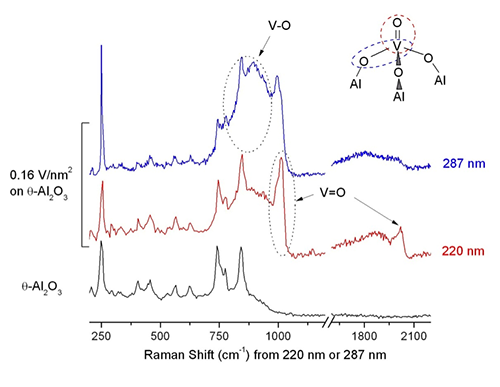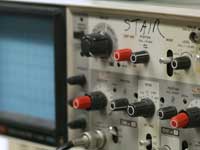In-situ resonance Raman spectroscopy of catalysts
My current research focuses on in-situ resonance Raman (RR) spectroscopic study of catalysts and materials. Excitation wavelengths available for RR cover deep UV to near IR (210-900 nm) region using a continuously wavelength-tunable Ti:Sapphire laser system and other discretely wavelength-tunable lasers. A triple-grating spectrometer coupled to CCD and IPMT detectors and a fluidized bed reactor are used to obtain in-situ RR data at a wide range of temperature and pressure (e.g., catalytic working conditions). Compared with typical Raman spectroscopy, RR provides much higher sensitivity and selectivity in detecting the surface species and bulk materials. Detailed information on the RR system that are setup in Argonne National Laboratory and a comparison of RR detection sensitivity with other common techniques of SFG, PM-IRAS, and EXAFS can be found in our review paper, Chem. Soc. Rev., 2010, 39, 4820–4844.
 Figure 1:
Figure 1:
UV resonance Raman spectra excited at 220 nm and 287 nm for alumina supported vanadium oxide monomers. The V=O stretching mode is selectively enhanced with 220 nm excitation, while the V–O stretching modes are selectively enhanced with 287 nm excitation.
Grant: ICEP

